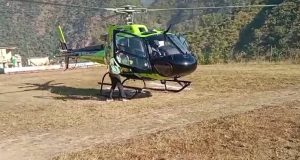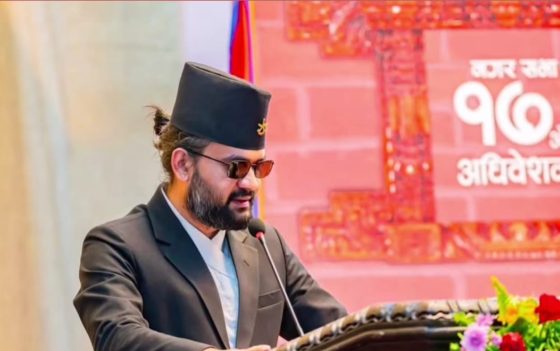North Korea said it set off a hydrogen bomb on Sunday in its sixth nuclear test, which judging by the earthquake it set off appeared to be its most powerful explosion yet.
South Korea’s weather agency estimated the nuclear blast yield of the presumed test was between 50 and 60 kilotons, or five to six times stronger than North Korea’s fifth test in September 2016. That would mark a significant step forward in the North’s quest for a viable nuclear missile capable of striking anywhere in the United States.
On North Korean television, a newsreader called the test a “complete success” and said the “two-stage thermonuclear weapon” had “unprecedented” strength. Hours earlier, Pyongyang claimed its leader had inspected a hydrogen bomb meant for a new intercontinental ballistic missile.
Seoul’s weather agency and the Joint Chiefs of Staff said an artificial 5.7 magnitude quake occurred at 12:29 p.m. local time, in Kilju, northern Hamgyong province, the site where North Korea has conducted nuclear tests in the past.
Seoul officials revised their earlier estimate of 5.6 magnitude quake. The US Geological Survey called the first quake an explosion with a magnitude 6.3.
The US State Department had no immediate reaction. South Korea’s presidential office said it will hold a National Security Council meeting chaired by President Moon Jae-in.
South Korea’s military said it has strengthened its monitoring and readiness while mulling a variety of possible responses that could be executed in collaboration with the US.
Japan confirmed that North Korea conducted a nuclear test, Foreign Minister Taro Kono said. “It is absolutely unacceptable if North Korea did force another nuclear test, and we must protest strongly,” Prime Minister Shinzo Abe said.
The USGS and China’s earthquake administration detected a second tremor in North Korea minutes after the first, describing it as a cave-in or collapse. South Korea’s weather agency, however, said no second quake occurred.
North Korea conducted two nuclear tests last year, the last nearly a year ago, on the September 9 anniversary of the nation’s founding. It has since maintained a torrid pace in weapons tests, including its first two intercontinental ballistic missiles test in July.
Last month, North Korea fired a potentially nuclear- capable midrange missile over northern Japan.
Yesterday, photos released by the North Korean government showed Kim talking with his lieutenants as he observed a silver, peanut-shaped device that was apparently the purported thermonuclear weapon destined for an ICBM.
What appeared to be the nose cone of a missile could also be seen near the alleged bomb in one picture, which could not be independently verified and was taken without outside journalists present. Another photo showed a diagram on the wall behind Kim of a bomb mounted inside a cone.
State media said Kim visited the Nuclear Weapons Institute and inspected a “homemade” H-bomb with “super explosive power” that “is adjustable from tens (of) kiloton to hundreds (of) kiloton.”
North Korea’s nuclear and missile programme has made huge strides since Kim rose to power following his father’s death in late 2011. The North followed its two tests of Hwasong-14 ICBMs by threatening in August to launch a salvo of its Hwasong-12 intermediate range missiles toward the US Pacific island territory of Guam.
It flew a Hwasong-12 over northern Japan last week, the first such overflight by a missile capable of carrying nukes, in a launch Kim described as a “meaningful prelude” to containing Guam, the home of major US military facilities, and more ballistic missile tests targeting the Pacific.
It may be difficult for outside experts to confirm that the nuclear device detonated yesterday was an H-bomb. State media reported that the test left no trace of radioactive material.
The US and its allies attempt to detect blast material to gauge North Korea’s progress, but Pyongyang has become better at containing it as its nuclear program has evolved.
To back up its claims to nuclear mastery, such tests are vital. The first of its two atomic tests last year involved what Pyongyang claimed was a sophisticated hydrogen bomb; the second it said was its most powerful atomic detonation ever.
It is almost impossible to independently confirm North Korean statements about its highly secret weapons programme.
North Korea is thought to have a growing arsenal of nuclear bombs and has spent decades trying to perfect a multistage, long-range missile to eventually carry smaller versions of those bombs.
The White House said President Donald Trump spoke with Prime Minister Shinzo Abe of Japan regarding “ongoing efforts to maximize pressure on North Korea.”
The statement did not say whether the conversation came before or after the North’s latest claim.
 Dainik Nation News Portal
Dainik Nation News Portal




